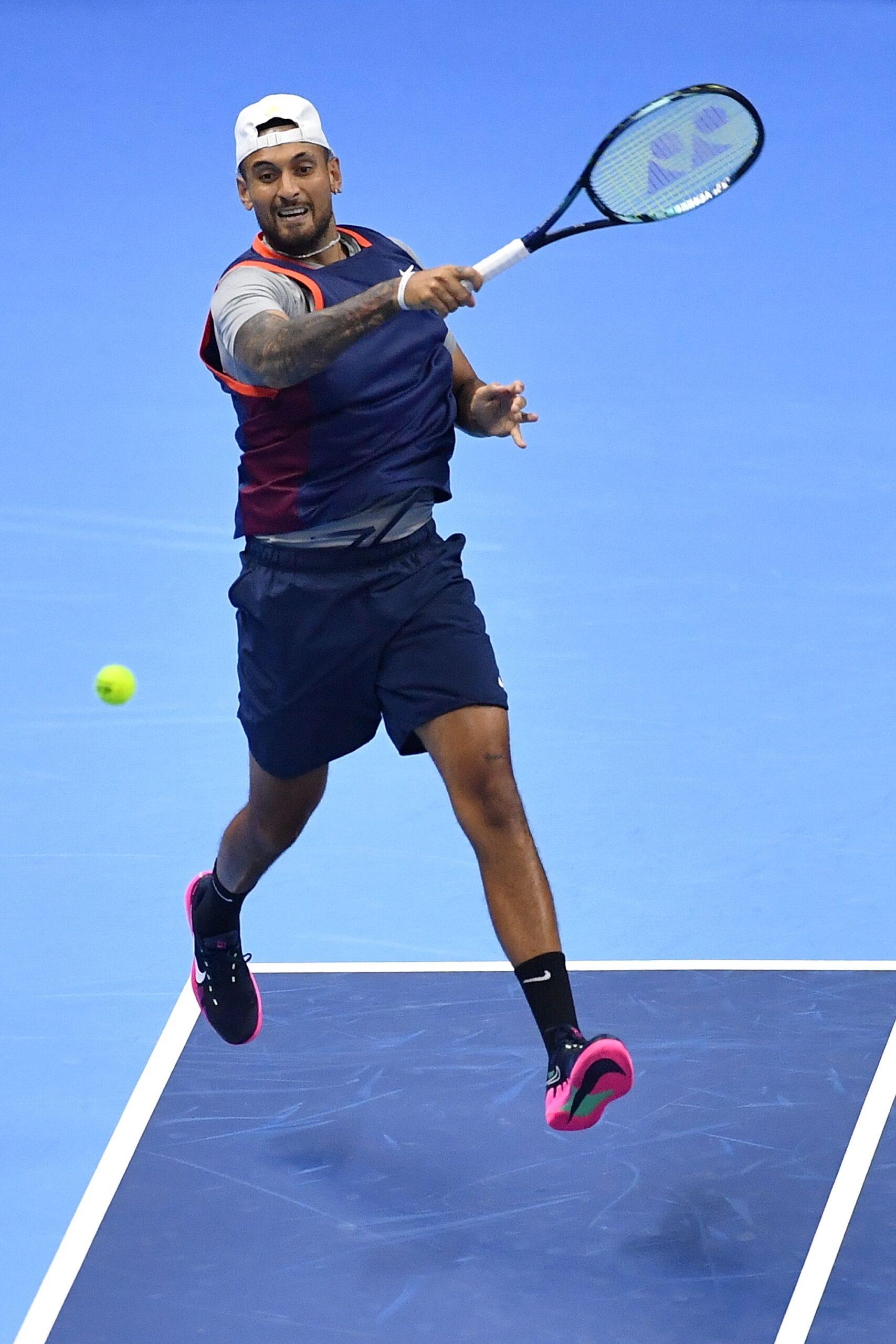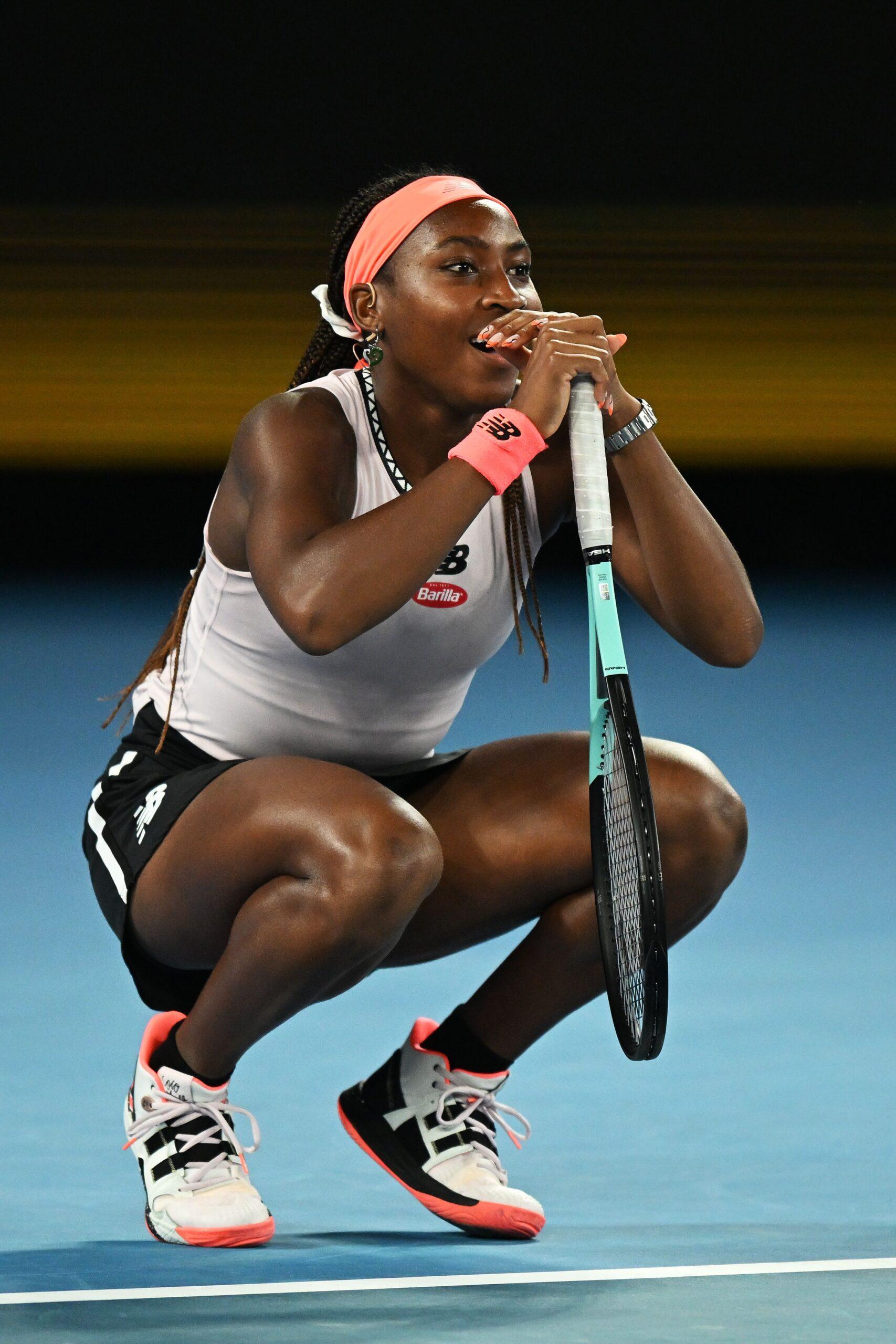The rising interest in Formula One, particularly in the United States, is inextricably tied to the Netflix docuseries Drive to Survive, which offered newcomers a glimpse of the sport’s high-stakes drama and internal politics. Turns out a reality series in which conventionally attractive people drive the fastest cars on the planet at the behest of cutthroat team principals makes for compelling television. Four seasons in, Drive to Survive has been a win-win-win for Netflix, the sport, and the athletes who make it all possible, especially the Australian driver Daniel Ricciardo, whose infectious charisma made him an instant fan favorite and something of a celebrity in the U.S. It’s no surprise, then, that off the back of Drive to Survive’s success, Netflix and the show’s producing team are looking to replicate its buzz with another show highlighting a sport that’s ripe for a potential breakout: tennis.
The new docuseries Break Point, which released its first batch of episodes on Friday, follows key players on the ATP and WTA tours over the course of the 2022 season. It may be too soon to say whether Break Point will grow the global popularity of tennis, but with the show featuring the kind of behind-the-scenes access that became one of Drive to Survive’s biggest selling points, there’s plenty that could reel viewers in. For better or for worse, that includes Break Point bringing attention to its own Aussie athlete as the primary subject of its series premiere: Nick Kyrgios.
For the uninitiated, Kyrgios is one of the most fascinating—and polarizing—players in the sport: a prodigious talent capable of spectacular moments on the court that are often overshadowed by his volatile behavior. (Kyrgios tends to yell at everyone: the chair umpire, the people in his player’s box, the crowd, and even himself.) There’s no denying that a Kyrgios match makes for must-see TV, but it’s hard to imagine the ATP would want him to be the first face representing the sport on Netflix, especially after he was charged last year with assaulting his ex-girlfriend. (The case has been adjourned until February.)

Opening with the first Grand Slam of the calendar year, the Australian Open, Break Point uses Kyrgios to highlight the enormous challenge that faces every rising star on the men’s side: competing at the same time as three all-time greats in Roger Federer, Novak Djokovic, and Rafael Nadal, who have won an astonishing 63 Grand Slam singles titles (and counting) between them. But with Federer injured (he has since retired), Djokovic unable to participate on account of being unvaccinated against COVID-19, and Nadal coming back from a long-term injury, the 2022 Aussie Open seems like the perfect stage for someone to have their coming-out party. Could that player be Kyrgios?
If it’s difficult for the Drive to Survive producers to know which drivers the crew should follow on a given race weekend—there are 20 of them split between 10 teams—then Break Point’s producers face a true throw of the dart. Grand Slams have 256 players competing between the men’s and women’s draws (128 on each side), and while Kyrgios is the hometown hero in Australia, he’s proved more liable to implode in the early rounds than go deep into a tournament. Sure enough, he loses in the second round to a top-ranked player, but Break Point strikes gold with Kyrgios’s performance in the doubles draw, where he and close friend Thanasi Kokkinakis win the whole damn thing. Against all odds, Kyrgios becomes a Grand Slam winner—and Netflix is there for all of it.
The unexpected foray into doubles allows Break Point to hammer home its biggest theme: Tennis is a sport that is as isolating as it is demanding, and players need a strong support system around them to get through the highs and lows of a season. In Kyrgios’s case, there is arguably nothing better for curbing his self-destructive impulses than having a friend next to him on the court in Kokkinakis. (Naturally, Kyrgios still smashes a racket in frustration during one of their matches, but the duo pull through in the end.) But while Kyrgios’s antics generate plenty of headlines, he’s far from the only player who must navigate the mental side of the game—for every Grand Slam winner, there are 127 losers stewing over what could have been. Each of the athletes featured in Break Point’s opening episodes, including Matteo Berrettini, Maria Sakkari, Taylor Fritz, Paula Badosa, and Ons Jabeur, deal with this pressure in their own way. Some fare better than others.
The Greek star Sakkari, for instance, might hold the crown for being the most shredded player on the WTA tour, but she has developed a reputation for falling apart in big moments. The tragic irony of Sakkari is that, despite being a top 10 player, the weight of expectations means her lack of titles—she has only one in her career, which is surprising given her stature in the sport—is sometimes perceived as a failure. It becomes a vicious cycle for someone like Sakkari: The more she fails to live up to the hype, the more it damages her self-worth. The on-court collapse from Sakkari during a pivotal match in Break Point’s third episode is devastating because of the sense of inevitability that precedes it. As Sakkari’s mother, herself a former player, laments: “Tennis players don’t just lose to their opponents, they lose to themselves.”
What makes Break Point such a fascinating docuseries, especially in relation to Drive to Survive, is just how unappealing it makes a tennis career out to be. The vast majority of players come away from tournaments feeling disappointed and must endure living out of suitcases for, as Fritz estimates, at least 30 weeks of the year. The players may have a team with them composed of coaches, fitness trainers, and loved ones, but when they step onto the court, it’s up to them to make everyone’s sacrifices for the nomadic lifestyle worth it. The only reprieve the players get from this grueling schedule are the moments of adrenaline-pumping triumph, which Badosa likens to a drug that becomes highly addictive. It helps explain why Fritz, who injures his ankle before the most important match of his career, doesn’t second-guess his decision to take painkillers and play in spite of the potential long-term risk.
As an avid tennis fan and player myself—if you’re a 4.0 and based in New York, hit me up—Break Point is most effective when it captures the emotional toll the sport takes on the athletes and those closest to them. (A friend of mine who was a very talented high school player grew to loathe the sport and wouldn’t pick up a racket for years.) Even Kyrgios, for all his faults, has been admirably open about his mental health struggles over the years: At one point in the premiere, his manager recounts having to track Kyrgios down before matches after long nights of drinking. Meanwhile, on the women’s side, Badosa is perhaps the most high-profile WTA player to discuss dealing with anxiety and depression from the intense demands of the sport. Life as a globe-trotting athlete may look aspirational, but with all the pressure and disappointment they have to contend with, it’s not for the faint of heart.
It’s hard to know how audiences will react to the unglamorous reality of professional tennis as presented on the show. Viewed as a companion series to Drive to Survive, Break Point is certainly less flashy and more introspective, but that doesn’t make it any less gripping from a dramatic standpoint. (That said, I obviously have some bias because I already care about the sport.) The greater challenge for Break Point might be how it balances all the players it intends to feature in its first season—and possibly beyond.

It’s easier for viewers to become invested in the lives of Formula One drivers when there are only 20 of them, and each season of Drive to Survive provides frequent check-ins on their progress on and off the racetrack. Conversely, there are dozens of tennis players across both tours who would make a worthy subject for an episode: If the Break Point production team gets to cover the 2023 season, they should spotlight Holger Rune, a hot-headed Danish teenager who’s already cracked the ATP top 10, and Coco Gauff, the next great American hope for women’s tennis. Even limiting the player pool to those already featured on the show, Break Point jumps between enough athletes through its first five episodes that, with the exception of the universally liked Jabeur, it’s difficult to become emotionally attached to any of them. (Seriously, Netflix should just make a separate docuseries about Jabeur, who is known as the “Minister of Happiness” back home in Tunisia.)
In any event, we should have a better idea of whether Break Point can move the needle for the sport’s popularity when the second batch of episodes arrives in the summer. (Those episodes will cover the back half of the 2022 season, which includes the legendary Serena Williams retiring at the U.S. Open and Kyrgios playing an infamously spicy match against Stefanos Tsitsipas in the third round of Wimbledon.) Break Point has the ingredients to become Netflix’s next sports docuseries sensation, but as the players starring in the show can attest, even the best-laid plans can reach their breaking point.
